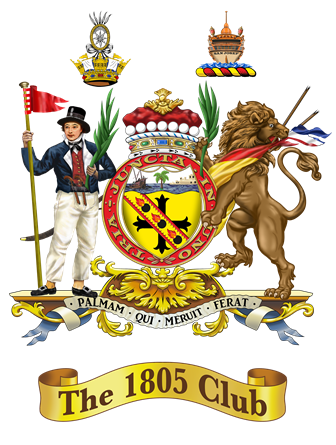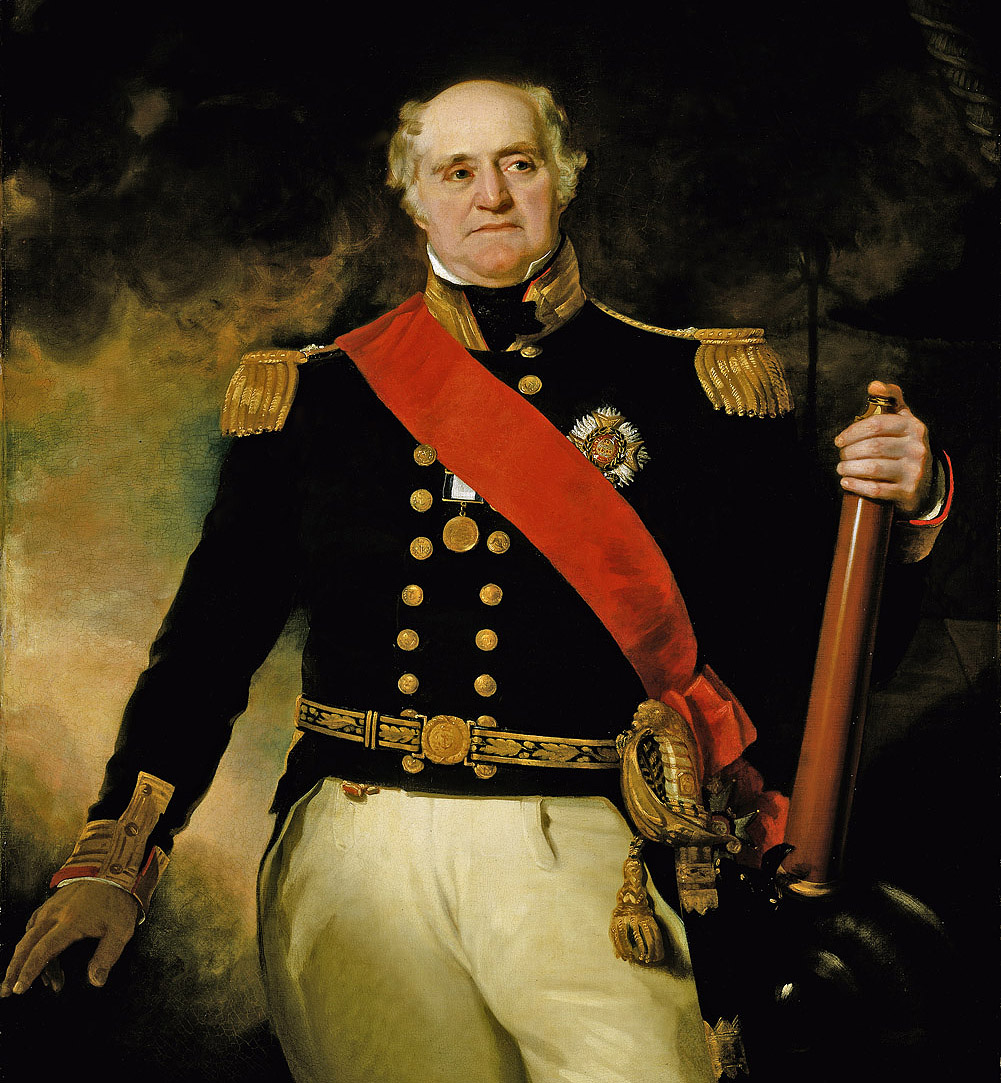The 1805 Club uses cookies to ensure you have the best possible online experience. By continuing to use this site you consent to the use of cookies in accordance with our cookie policy.
Hardy will always be best remembered for the part he played in the company of Nelson at the Battle of Trafalgar on board hms Victory but his career encompassed very much more. He psent fifty-eight years of his life serving his country in the Royal Navy and, in the words of the inscription on his memorial at Greenwich, he was ‘one of the noblest ornaments of the profession.’ His features were broad and massive and he was taller than most of his contemporaries. His nature was calm, patient, slow and careful; his manner strong; his character sometimes stubborn but his mind agile; his instinct quick and decisive.
Hardy was born on 5 April 1769 at Portisham, Dorset, the sixth child and second son of Joseph Hardy and Nanny, daughter of Thomas Masterman. He entered the Navy in 1781 on board the Brig hms Helena but left to attend school for three years, also spending some time in the Merchant Navy. In 1790, he decided to rejoin the Royal Navy, his first appointment being as midshipman with hms Hebe.
It is probable that Hardy became known to Nelson as early as 1795, when serving as a lieutenant on hms Meleager, one of Nelson’s squadron off Genoa. In 1796, by then serving in hms La Minerve, which at that time was flying Commodore Nelson’s broad pendant, he took part in a fierce engagement with the Spanish frigate Santa Sabina. The ship was captured and Hardy was one of the prize crew, so when a superior Spanish squadron appeared and recaptured her, he became a prisoner of war. But his stay in Spain lsated only a few weeks, for Nelson arranged an exchange in return for the release of the captain of the Santa Sabina, Don Jacobo Stuart.
Hardy had only been back on board La Minerve for a few hours when a sailor fell overboard. Even though the ship was being chased by a Spanish squadron, Hardy went in a boat to try and save the man. Discovering that he had drowned, he and his boat’s crew were struggling to regain their ship but found that they were being carried by the strong current towards the Spanish. Seeing what was happening, Nelson declared, ‘By God, I’ll not lose Hardy,’ and surprised the Spanish by ordering the ship to be hove to. Seeing this, the Spanish hesitated long enough to allow them to pick up Hardy and his men.
A few weeks later, Hardy took part in the Battle of Cape St Vincent on board hms La Minerve, and shortly after captured the brig La Mutine in a gallant cutting-out operation at Tenerife, for which he was promoted commander and given command of his own prize. In 1798, he took part in the campaign and Battle of the Nile and was promoted post captain by Nelson, who then took him into the Vanguard as his flag captain. So began the close bond between him and Nelson as he followed the admiral into hms Foudroyant for the Neapolitan campaign of 1799, and then to the Baltic in 1801 when he was captain of hms St George.
They then had a short time apart until, in May 1803, Hardy commissioned the Victory as Nelson’s flagship. He served throughout the Mediterranean campaign of 1803–5 and the great chase to the West Indies in the summer of 1805. By then Hardy was unwell and when the Victory returned to Britain in August, he went home on leave. However, he rejoined Nelson at Portsmouth in September and so was with him at Trafalgar. In Nelson’s final hour, with the battle won, Hardy reported the state of the battle to his commander and took Nelson’s hand in congratulation of his brilliant victory, telling him that possibly fourteen or fifteen prizes had been taken. ‘That is well, but I had bargained for twenty,’ was Nelson’s reply. The final moments of his master’s life were passing when Nelson said, ‘Take care of my dear Lady Hamilton; take care of poor Lady Hamilton. Kiss me, Hardy.’ Hardy knelt down and kissed him on the cheek. Nelson said, ‘Now, I am satisfied thank God, I have done my duty.’ Hardy stood for a moment in silent contemplation, then he knelt once more and kissed his friend’s forehead. Nelson asked, ‘Whos is that?’ ‘It is Hardy.’ ‘God bless you, Hardy.’ Hardy withdrew and returned to the quarterdeck, never to see his commander and friend alive again. He took the battered Victory home and carried the ‘Banner of Emblems’ at the state funeral in January 1806.
For his part in the great victory at Cape Trafalgar, Hardy was created a baronet, received the naval gold medal, a silver vase from the Patriotic Fund, and a presentation sword from the City of London.
After Trafalgar, he served at Lisbon 1809–12, the North American station 1812/13 and 1815, the South American station 1819–34, became colonel, Royal Marines 1821, rear admiral 1825, was appointed First Lord of the Admiralty 1830–4, decorated GCB 1834, became Governor of Greenwich Hospital 1834–9 and, finally, Elder Brother of Trinity House 1837.
On 20 September 1839, following his usual walk around the Greenwich Hospital grounds, he was seized with strong internal pains and in a few hours the solemn tolling of the hospital bell signalled that the name of Vice Admiral Thomas Masterman Hardy was now associated with the departed heroes of our country.
Hardy’s body is buried within the Georgian Mausoleum at Greenwich, adjacent to the National Maritime Museum, at the end, still, a sailor among sailors.
AGW
Memorials
Type: Mausoleum
Material: Brick
Location: The Mausoleum, Greenwich (now part of the University of Greenwich)
Click here to read more…
Type: Bust
Material: White marble
Location: At the entrance to the Chapel of the Royal Naval College, Greenwich
Click here to read more…
Type: Wall Plaque
Location: 156 Durnford Street, Stonehouse, Plymouth
Click here to read more…
The Chairman's Dispatch
Regular updates from The 1805 Club’s Chairman. See the archive.
Topmen
To find out more and to become a Topman, please click here.
Membership Leaflet
See why others have joined our international membership. Join today! A Membership Leaflet is available for you to print out.
Admiral Lord Nelson
Visit Admiral Lord Nelson's own blog www.admiralnelson.org.
New Links





